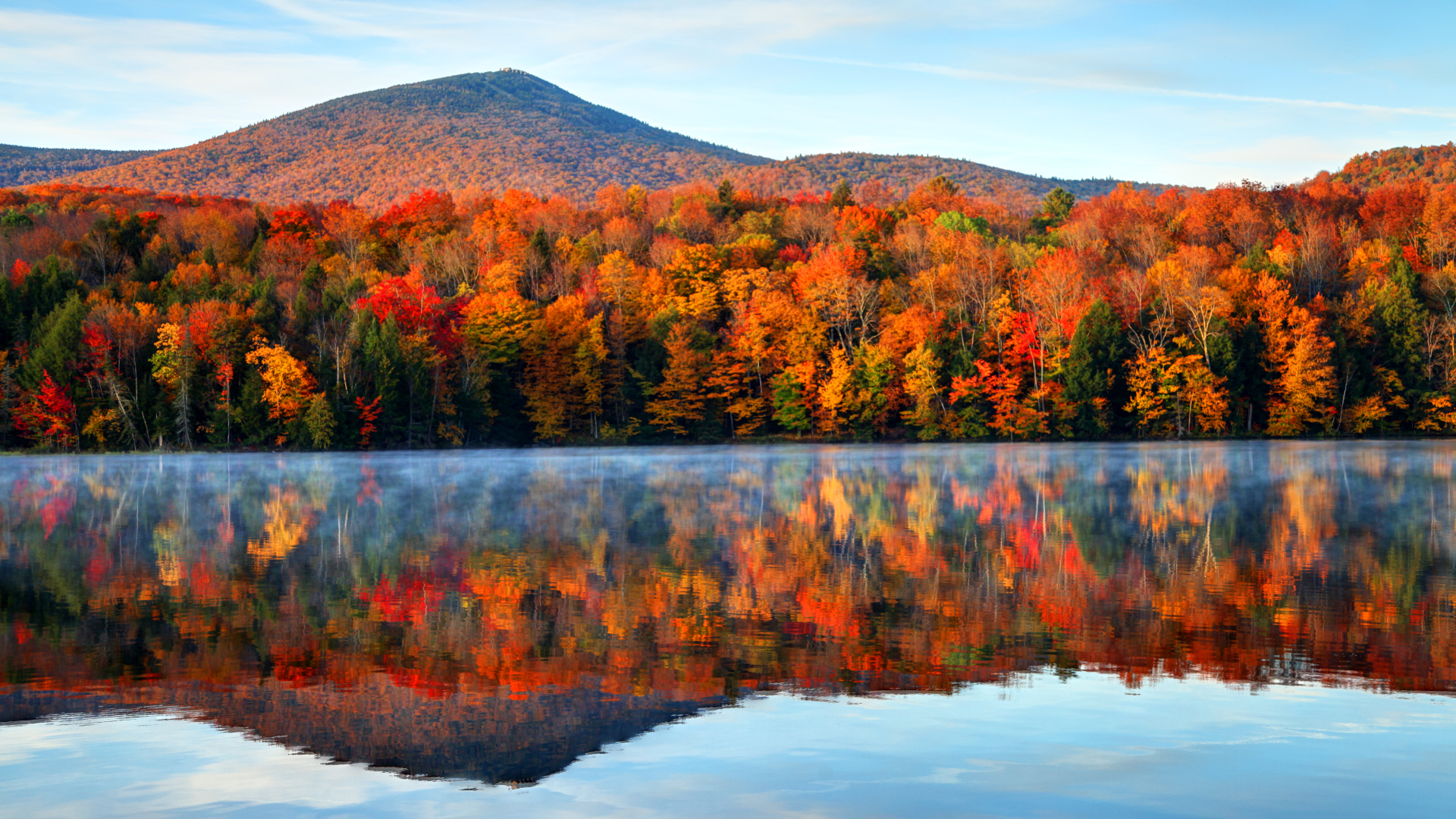6 fall hiking tips to get the best out of crisp autumn days on the trail
Trust me when I say that a lot of the best hiking has yet to come

It's fall and it's my absolutely favorite time of year for hiking. As I tramp down the trail, I relish the sound of dry leaves crunching under my hiking boots. A cool wind whispers through the trees and I shove my hands deeper into the pockets of my fleece jacket, snuggling it closer. No chance of getting hot and sweaty today and the pesky mosquitoes and midges that have been taunting me all summer have finally gone back to wherever it is they came from so I can enjoy the vibrant transition from green to golden in the trees above me.
If you usually pack away your trekking poles once Labor Day has passed, trust me here when I say that a lot of the best hiking has yet to come. The arrival of autumn does mark a change in how you should approach your hikes, however, so read on for our best fall hiking tips so you’re prepared for cooler weather, changeable conditions and the occasional gun-toting trail user.

1. Research peak foliage
Whether it’s the golden aspens of Colorado or Vermont’s scarlet maple trees, fall easily offers one of the most beautiful seasons for hiking. Foliage season varies according to your location and altitude, and can last for several weeks or seem to be over in an instant, depending on the weather.
Do your research to find out when peak foliage season typically is in your area and keep an eye on the trees to make sure you don’t miss it. One windy day can leave the trees bare before you even get the chance to appreciate them!

2. Watch out for hunters
In the US, hiking in the fall means hiking during hunting season. Since deer and elk like to hang out in the same places as hikers do, you need to be extra cautious when you’re on the trails. Wear a fluorescent orange beanie hat or vest over your hiking jacket so that hunters can clearly differentiate you from other animals they might spot through their scopes moving along the hillside.

3. Plan for shorter days
The shrinking days start to become more evident in the autumn, particularly once the clocks change, bringing nightfall an hour earlier. If you live in northern climes, you’ll have gotten used to being able to head out at 6 a.m. and stay out till 9 p.m. if you want to. Try that come September and you’ll be spending a lot of time in the dark, which can mean colder temperatures at high elevations and risk of getting injured or lost if you’re not prepared. Adjust your schedule to leave a little later and be back earlier, and carry a headlamp for longer hikes or in case you misjudge things.

4. Layer up
Yes, we know, we always tell you to dress in hiking layers, but in many popular hiking locations, you’d be forgiven if you haven’t exactly been lugging a down jacket on your adventures over the past few months. Fall hiking weather is typically ideal, since it’s a bit cooler and not so sweaty, but it can also be downright cold once the wind blows in, and a light shower can turn out to be hail or snow (we’ll get to the latter in a moment).
All the latest inspiration, tips and guides to help you plan your next Advnture!
Trade out those shorts for hiking pants and head out in a long-sleeved base layer. Carry a fleece jacket and a waterproof jacket in your backpack – even if it’s especially dry where you are, you may appreciate the wind protection. Finally, make sure you’ve got your best hiking gloves and beanie in case it’s chillier than you thought.

5. Plan for snow at high elevations
If you’re hiking in Vermont or the Lake District, the idea of snow in September might sound a bit dramatic, but at higher elevations in places like Colorado and Montana, it’s not unusual at all to find your route snow-covered when it was 70°F and sunny down in town. You’ll usually be able to see if there’s snow on the peaks before you set off, but it can be a good idea to carry some winter traction devices like Yaktrax or Microspikes for white trails.

6. Hydrate
When you’re not sweating it out in the blistering heat of summer, you may not feel as thirsty, but you’re still going to be sweating and breathing heavily, plus the drier air found at elevation in the fall can dehydrate you. Make sure you fill your water bottle or carry a hydration pack and take regular, small sips of water even if you don’t feel thirsty. If it's cold, it's also a good idea to pack a hiking flask in your backpack with a hot drink to warm you up.
Julia Clarke is a staff writer for Advnture.com and the author of the book Restorative Yoga for Beginners. She loves to explore mountains on foot, bike, skis and belay and then recover on the the yoga mat. Julia graduated with a degree in journalism in 2004 and spent eight years working as a radio presenter in Kansas City, Vermont, Boston and New York City before discovering the joys of the Rocky Mountains. She then detoured west to Colorado and enjoyed 11 years teaching yoga in Vail before returning to her hometown of Glasgow, Scotland in 2020 to focus on family and writing.

